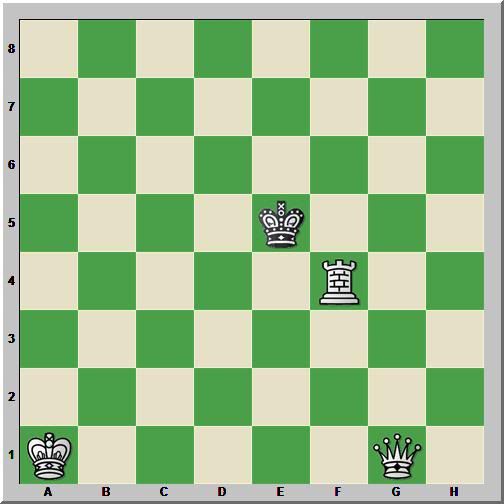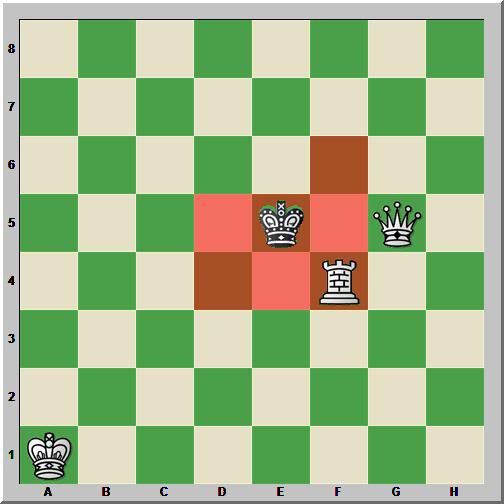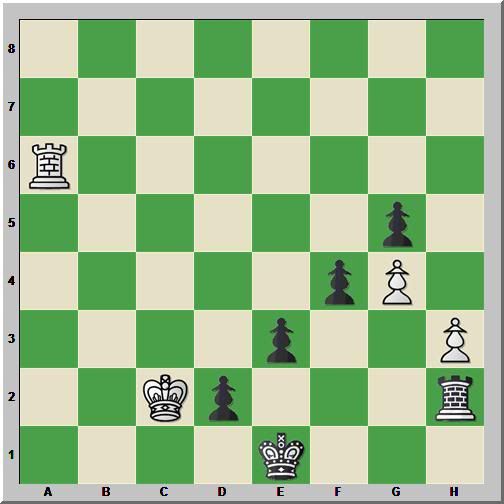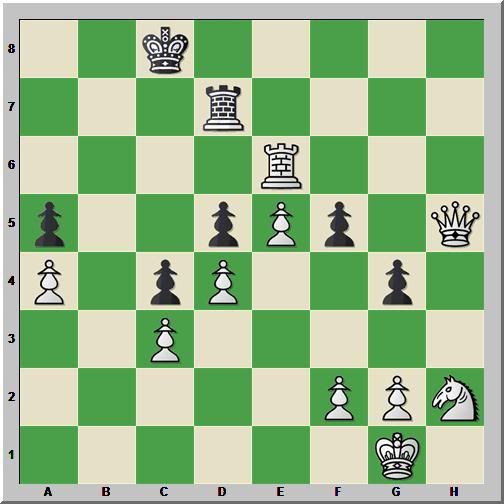Among the most common regrettable scenes at children's chess tournaments is the litany of useless checks as a queen or rook chases a lone king all over the chessboard. Check, check, check, ... but never checkmate. Jeremy Silman, in Silman's Complete Endgame Course (2007) uses the term "overkill mates" for situations he describes thus:
When you are up by a Queen and a Rook, or even by two Queens (or more!), one must wonder if your opponent (who could give up and show a bit of respect) is bullheaded or simply enjoys suffering and/or pain. Whatever his reasons for continuing might be, you are the one who must now demonstrate how easy it is to score the victory.I teach young students to never resign, but to make their opponents prove basic skills. There's plenty of time to discuss appropriate etiquette of resignation after they make it to C Class. First, they must acquire the skills that will raise them to D Class (1000-1199). Silman's rates his first chapter, teaching elementary checkmates with heavy pieces, as appropriate for players up to 999. In my experience, some players rated 700 know these skills well, but a few rated 1100 will fail, usually by stumbling into stalemate.
Silman, Silman's Complete Endgame Course, 3
An aspiring player looking to build a small, but substantial chess library, would do well to invest $25 in Silman's Complete Endgame Course. But, beginning players can spend less money, and gain good, well-sequenced instruction through purchase of Pandolfini's Endgame Course (1988), available from Amazon for $11.
Knight Award Skills
In my scholastic chess award sequence, youth who have demonstrated their basic understanding of chess through earning the pawn award, or by winning enough tournament games to achieve a rating over 500 begin with the Knight Award.
Knight: the Knight Award recognizes that the recipient has learned certain fundamental endgame and checkmate skills
1. Previously earned Pawn, or achieve a NWSRS rating over 500.
2. Demonstrate understanding of checkmate of lone king with heavy pieces:
* queen and rook,
* queen and king, and
* rook and king (each from two random positions selected by the coach).
3. Demonstrate understanding of “fox in the chicken coop” pawn promotion technique.
4. Complete “Knight Award: checkmates and tactics” worksheet.
5. Demonstrate ability to read chess notation.
2. Demonstrate understanding of checkmate of lone king with heavy pieces:
* queen and rook,
* queen and king, and
* rook and king (each from two random positions selected by the coach).
3. Demonstrate understanding of “fox in the chicken coop” pawn promotion technique.
4. Complete “Knight Award: checkmates and tactics” worksheet.
5. Demonstrate ability to read chess notation.
I test knowledge of checkmate with queen and rook by looking for the patterns in the first two positions from Pandolfini's Endgame Course: the queen and rook roll, and the rolling barrier. Jeremy Silman calls the second one the staircase, and I starting using the term zig-zag many years before Pandolfini's book was published. I learned the technique with two rooks (problem 3 in Pandolfini's text) sometime about 1968, when I first began playing chess.
Checkmate with Queen and Rook
The Queen and Rook Roll
White to move

Do not move the rook to safety. Defend it with the queen, while at the same time, attacking the king and driving it towards the edge.
1.Qd4
Note how the White pieces control every square around the king, except one. Note how they protect one another. Black has one legal move.
Black to move

1...Ke6
Now the rook moves.
2.Rf6+ Ke7
Then the queen.
3.Qd6+ Ke8
And now checkmate.
4.Rf8#
The Rolling Barrier
Starting from the same position as above, White has a second way to deliver checkmate in four moves. Black has more choices in the king's movement, but always moves closer to the edge where checkmate takes place.
1.Qg5+
Black to move

Black's king must move to the sixth rank, but may choose d6 or e6.
1...Ke6 2.Rf6+
The rook is protected by the queen. Black must move to the seventh rank.
2...Ke7 3.Qg7+
Black must move to the edge, and White checkmates by controlling the seventh and eighth ranks.
3...Ke8 (or Kd8) 4.Rf8#.
Applying Skills: Examples from Play
Black to move

In this game from the Internet Chess Club, 2001, Black has a checkmate in four using the rolling barrier.
White to move

There are two initial moves that deliver checkmate in five moves from this position. My opponent at the Internet Chess Club, 2002, opted for a variation on the queen and rook roll.












No comments:
Post a Comment